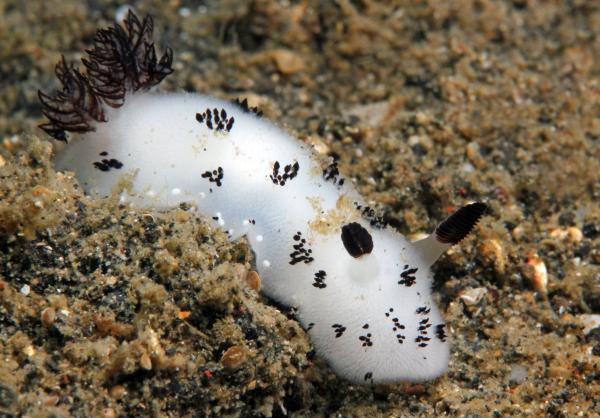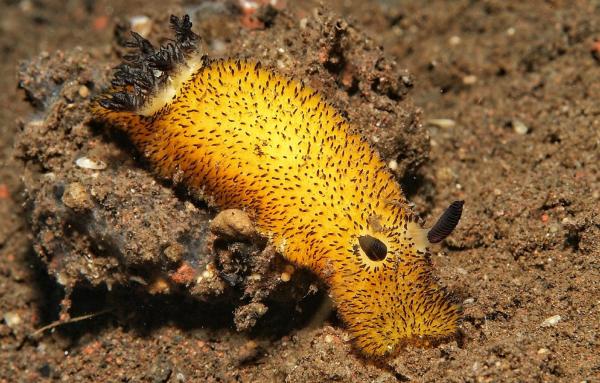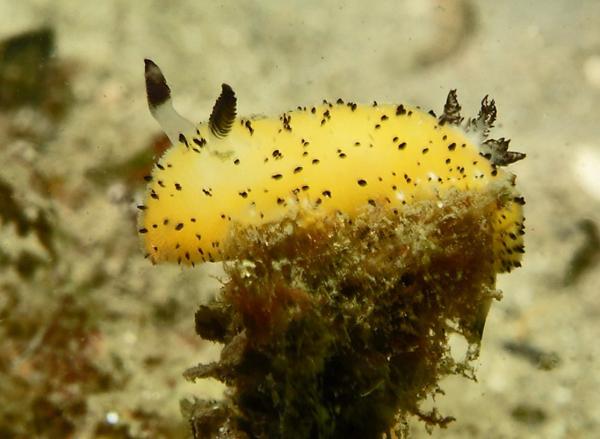The ocean is full of strange and fascinating creatures, and the sea bunny (Jorunna parva) is a perfect example. This tiny animal became famous on social media for its fluffy, adorable appearance—resembling a cartoon rabbit. In reality, however, the sea bunny is a type of highly toxic marine invertebrate and a formidable predator. In this article, you’ll discover what a sea bunny is, its main features, where it lives, what it eats, and how it reproduces.

Despite its cute name, the sea bunny (Jorunna parva) is not related to land rabbits at all. It is actually a species of sea slug, specifically a nudibranch, which is a group of soft-bodied, shell-less marine mollusks. It is more closely related to oysters and snails than to any mammal. Sea bunnies lack a shell, and their distinctive look has made them extremely popular in Japan and across the internet.
Coloration: Sea bunnies are usually white, yellow, orange, or brown, with yellow being the most common. Their bright coloration serves as a warning to predators.
Size: They are very small, typically around 1 centimeter long, and the largest individuals rarely exceed 2.5 centimeters.
“Rabbit Ears”: The two black, ear-like structures on their heads are actually rhinophores—sensory organs that detect chemicals in the water, helping them find food and sense danger.
Furry Appearance: The “fur” is created by black-tipped papillae (caryophyllidia) on their mantle, which function as sensory structures, picking up particles and water movement.
Exposed Gills: As nudibranchs, their gills are exposed and located on the back, allowing them to absorb oxygen directly from the water.
Highly Toxic: Sea bunnies are extremely poisonous. Their toxins are derived from their diet (especially marine sponges), and they use these toxins to defend themselves from predators.

Geographic Range: Sea bunnies are found throughout the Indo-Pacific Ocean, including areas such as Tanzania, Seychelles, Kii Peninsula and Okinawa in Japan, Papua New Guinea, and the Philippines.
Preferred Habitat: They prefer tropical waters and are benthic, meaning they live on or near the seafloor, often on rocks or marine vegetation.
Movement: Like land snails, they use a muscular foot to crawl slowly along the ocean substrate.
Habitat Choice: They thrive in areas with plenty of food resources, such as marine sponges.
Primary Diet: Sea bunnies are active predators, primarily feeding on marine sponges.
Feeding Mechanism: Their mouths contain a specialized radula—a tongue-like organ with tiny teeth that scrapes off food from hard surfaces. They also have oral tentacles to help manipulate food.
Toxin Accumulation: The sea bunny absorbs toxins from the sponges it eats, storing these compounds in its body for use as chemical defense, making it nearly predator-free.

Hermaphroditism: Sea bunnies are hermaphroditic, possessing both male and female reproductive organs.
Mating Process: They require another individual to mate, which ensures genetic diversity and healthy offspring. During courtship, sea bunnies perform a spiral “dance” before pairing up and exchanging sperm.
Egg Laying: After fertilization, the sea bunny produces a ribbon-like string of eggs, which contains the developing embryos. The young hatch as miniature versions of adults and lose their temporary shell as they mature.
Life Span: Sea bunnies generally live for about one year and have strong reproductive potential.

The sea bunny is a tiny but highly distinctive marine mollusk, famous for its adorable look and fascinating biology. Despite its fluffy appearance, it is a toxic predator and a master of survival in the ocean’s diverse ecosystems. Learning about sea bunnies helps us appreciate the complexity and wonder of marine life.
Bibliography
Global Biodiversity Information Facility (2022) Jorunna parva Baba, 1938. Available at: https://www.gbif.org/species/165518764
Camacho-García, Y. E., & Gosliner, T. M. (2008). Systematic revision of Jorunna Bergh, 1876 (Nudibranchia: Discodorididae) with a morphological phylogenetic analysis. Journal of Molluscan Studies, 74(2), 143-181.
animal tags: Sea Bunny
We created this article in conjunction with AI technology, then made sure it was fact-checked and edited by a Animals Top editor.